Outdoor spaces have immense potential to be both practical and visually beautiful, but they are frequently underutilized after sunset. Landscape cross lighting is a fantastic solution to this problem, letting you enjoy the beauty of your exterior space late into the evening. Whether you have a large garden, a cozy patio, or a magnificent pool area, this strategy may highlight the characteristics you like while boosting safety and security.
When it comes to creating captivating outdoor scenes, mastering the art of landscape cross lighting can make all the difference. Whether you’re a seasoned photographer, a passionate visual artist, or a homeowner looking to enhance your exterior space, understanding the nuances of cross lighting can elevate your creations to a whole new level. In this comprehensive guide, we’ll delve into the realm of outdoor cross lighting, exploring its benefits, techniques, and applications. By the end of this journey, you’ll have the knowledge you need to successfully apply cross lighting in your outdoor settings, creating mesmerizing visual spectacles that leave a lasting impression.
Landscape Cross Lighting Definition. What is Landscape Cross Lighting
Landscape cross lighting, often referred to as landscape cross-lighting, is the strategic placement of light fixtures so that lights coming from different directions intersect at different angles over the desired feature. This lighting method creates multidimensional illumination, casting shadows and highlights that add depth and intrigue to outdoor spaces. You can use this technique to emphasize architectural elements, lush foliage, and other exterior features, transforming your place into a captivating nocturnal refuge.

The Importance of Outdoor Landscape Cross Lighting
Mastering the outdoor cross lighting technique requires technical know-how and artistic intuition and typically uses multiple light sources placed strategically to create a balanced interplay of light and shadow. Outdoor landscape cross lighting is a powerful lighting method that adds depth, dimension, and drama to outside scenes, revealing textures and details that might otherwise remain hidden in a single-directional light. Through carefully positioning light sources, balancing intensity, and experimenting with different angles, you’ll be able to reveal the hidden beauty of your landscape in ways you never thought possible.
By embracing this lighting method, you can transform ordinary outdoor scenes into breathtaking visual narratives that evoke emotions and captivate viewers. Whether you’re a photographer looking to enhance your portfolio, an artist aiming to convey emotions through your work, or a homeowner seeking to create a captivating outdoor haven, landscape cross lighting is a tool that will undoubtedly take your creative endeavors to new heights.
Landscape Cross Lighting Advantages and Disadvantages
In the realm of outdoor aesthetics, landscape cross lighting has emerged as a method that can transform ordinary scenes into fascinating visual masterpieces. However, like any artistic approach, it comes with advantages and disadvantages. In this post we’ll delve into landscape cross lighting, uncovering its benefits and drawbacks. By the end, you’ll know whether this technique is proper for outdoor lighting projects.
Landscape Cross Lighting Advantages
Focal Point Emphasis: For landscapes with specific focal points, such as sculptures, fountains, or architectural features, cross lighting can work wonders in directing attention. By strategically placing light sources, you can draw the eye to these key elements, creating a sense of hierarchy within the scene. This method allows you to guide the viewer’s gaze and narrative flow.
Enhanced Depth and Texture: One of the most prominent advantages of landscape cross lighting is its ability to accentuate depth and texture. By lighting objects from different angles, this technique brings out intricate details that might remain hidden under a single light source. Whether it’s the rough texture of a tree’s bark or the intricate patterns of a garden pathway, outdoor cross lighting adds dimensions that enrich the overall visual experience.
Dramatic Visual Impact: The interplay of light and shadow resulting from cross lighting creates a dramatic effect that can elevate the appeal of any outdoor scene. The contrast between illuminated and shadowed areas adds an element of intrigue, making the viewer’s gaze linger and explore the composition. The captivating visual impact of cross lighting can transform a mundane landscape into a work of art.
Versatility and Adaptability: Landscape cross lighting is incredibly versatile, adapting to various outdoor scenarios and aesthetics. Whether you’re lighting up a tranquil residential garden, a bustling urban square, or a serene forest at dusk, outdoor cross lighting can be customized to match your artistic vision. Its adaptability makes it a valuable tool for artists, photographers, and homeowners.
Landscape Cross Lighting Disadvantages
Complex Setup: Implementing landscape cross lighting can be more complex compared to traditional lighting methods. The need for multiple light sources and careful positioning requires technical expertise. Additionally, adjusting angles and intensities may demand more time and effort during the setup phase.
Cost Considerations: Achieving the desired cross lighting effect often requires investing in multiple high-quality lighting fixtures. Quality lighting equipment can be costly, especially if you want steady lighting throughout huge outdoor areas. While the results can be stunning, the initial investment may pose a challenge for those with limited budgets.
Light Pollution Concerns: Improperly planned cross lighting setups can contribute to light pollution, negatively impacting the environment and neighboring spaces. To avoid this, use shielded fixtures and direct light only where needed, ensuring that the beauty of your illuminated landscape doesn’t come at the expense of the night sky and wildlife.
Skill and Expertise: Mastering landscape cross lighting requires a level of skill and expertise in lighting techniques. Achieving the perfect balance between light and shadow, as well as efficiently spotlighting crucial parts, necessitates a knowledge of lighting fundamentals as well as aesthetic sensibility. Beginners may face a learning curve before achieving desired results.
Types of Landscape Cross Lighting
Landscape cross lighting techniques provide a wide range of options for improving the beauty and utility of outdoor settings. These solutions accommodate many demands and tastes, from generating a warm and pleasant environment to illuminating specific task areas and highlighting architectural features. Landscape ambient cross lighting creates a relaxing atmosphere, whereas landscape task cross lighting provides practical functionality. Landscape accent cross lighting adds drama and visual appeal to the landscape, whilst landscape decorative cross lighting offers elegance and charm. Each style has its advantages, allowing you to personalize your landscape lighting to your creative vision and practical needs. Understanding the qualities and applications of these approaches will empower you to change your outdoor areas into engaging and magical landscapes that make a lasting impact.
Landscape Ambient Cross Lighting
Landscape ambient cross lighting is a technique for lighting a whole outdoor space with a soft, diffused light. It enhances the overall ambiance and mood of the landscape by providing a gentle, even glow. This approach makes outside spaces like patios, decks, and garden seating areas feel more pleasant.
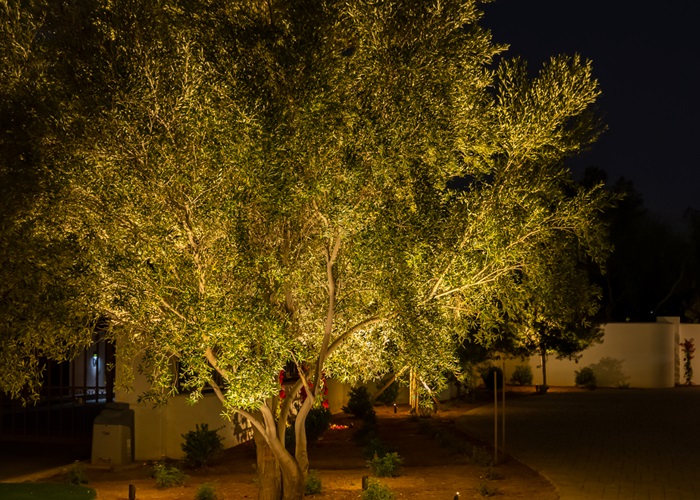
Outdoor ambient cross lighting contributes to the atmosphere of relaxation and socialization, making it perfect for evening gatherings or intimate moments. Exterior ambient cross lighting adds a warm ambiance that encourages people to linger in outside spaces. The diffused lighting minimizes harsh glare, creating a comfortable and visually pleasing environment. This type of lighting creates soft, delicate shadows that add to a relaxing and calm mood.
Landscape Task Cross Lighting
Landscape task cross lighting involves illuminating specific areas within the landscape to facilitate various activities. It focuses on providing targeted, functional lighting for practical purposes and is perfect for areas that require focused illumination, such as outdoor kitchens, pathways, and workspaces.
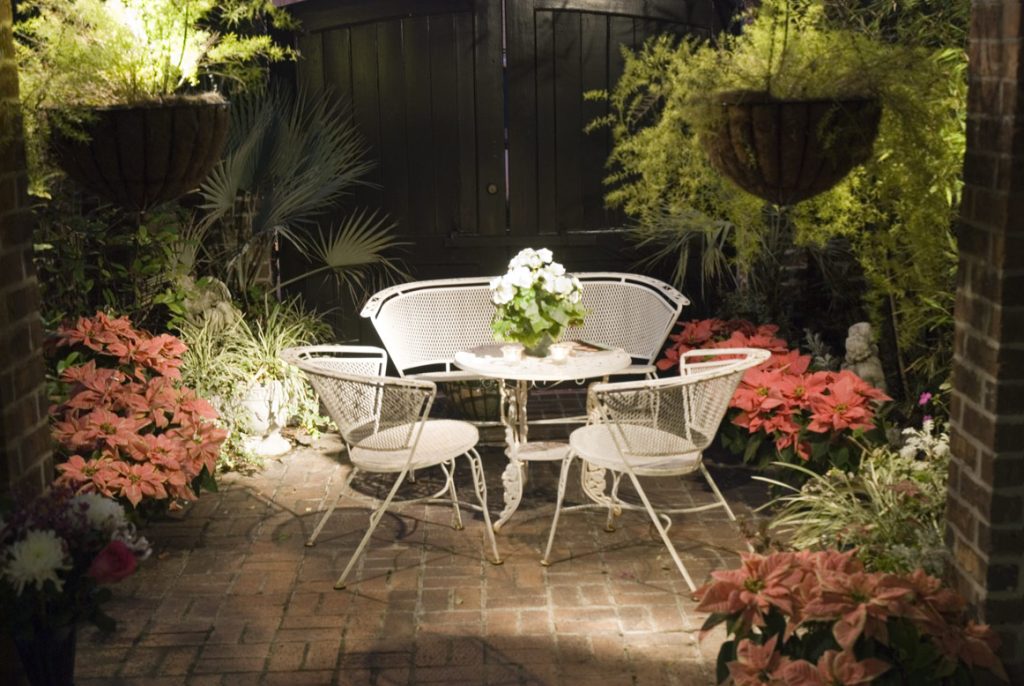
Outdoor task cross lighting ensures safety and convenience by allowing people to carry out tasks without straining their eyes. Exterior task cross lighting ensures that the key areas are well-lit, enabling efficient and safe completion of activities. Illuminating pathways, stairs, and entrances reduces the risk of accidents and enhances overall security. This type of lighting allows for tailored lighting solutions that cater to specific needs, enhancing the usability of outdoor spaces.
Landscape Accent Cross Lighting
Landscape accent cross lighting emphasizes specific architectural or natural characteristics of the landscape. It is used to highlight features such as sculptures, trees, and architectural details and adds aesthetic interest by emphasizing distinct aspects. Outdoor accent cross lighting adds drama and refinement to the landscape by generating focus points that draw the viewer’s attention.

Outside accent cross lighting enhances landscape aesthetic appeal by emphasizing prominent features and creating a sense of interest. This lighting method allows for artistic expression by directing light to transform everyday objects into spectacular works of art. Accent cross lighting provides depth and character to the environment by playing with light and shadow, highlighting textures and subtleties.
Landscape Decorative Cross Lighting
Landscape decorative cross lighting adds flair and beauty to outdoor environments. This method improves the aesthetic of gardens, patios, and outside recreational areas using visually pleasing lighting fixtures that enhance the aesthetic of the landscape.
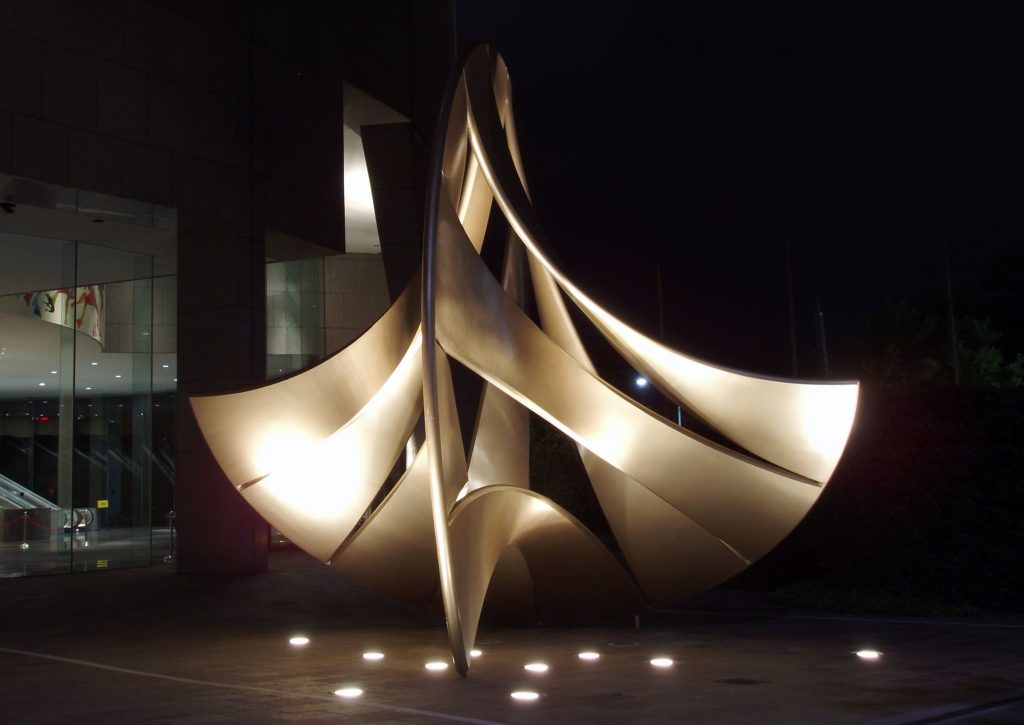
Outdoor decorative cross lighting fixtures work as functional light sources and aesthetic features. These add to the overall aesthetic design by blending in with the landscape’s style. This approach gives outdoor spaces a touch of elegance and uniqueness, making them visually appealing day and night. Decorative cross lights come in a wide variety of styles, allowing you to select pieces that complement the concept and character of your landscape.
Types of Outdoor Cross-Lighting Fixtures
Outdoor cross-lighting fixtures offer a range of options to light your outside spaces with flair and functionality. Whether you’re aiming for elegance, nostalgia, architectural enhancement, or dramatic effects, there’s a fixture type to suit your needs. Landscape cross-lighting uplights create a warm ambiance, outdoor cross-lighting vintage lights add character, outdoor cross-lighting wall mount fixtures provide directed illumination, and outdoor cross-lighting well-lights offer striking uplighting effects. By carefully selecting the proper type of fixture for each area, you can curate a captivating outdoor environment that combines practicality with aesthetics.
Landscape Cross-Lighting Uplights
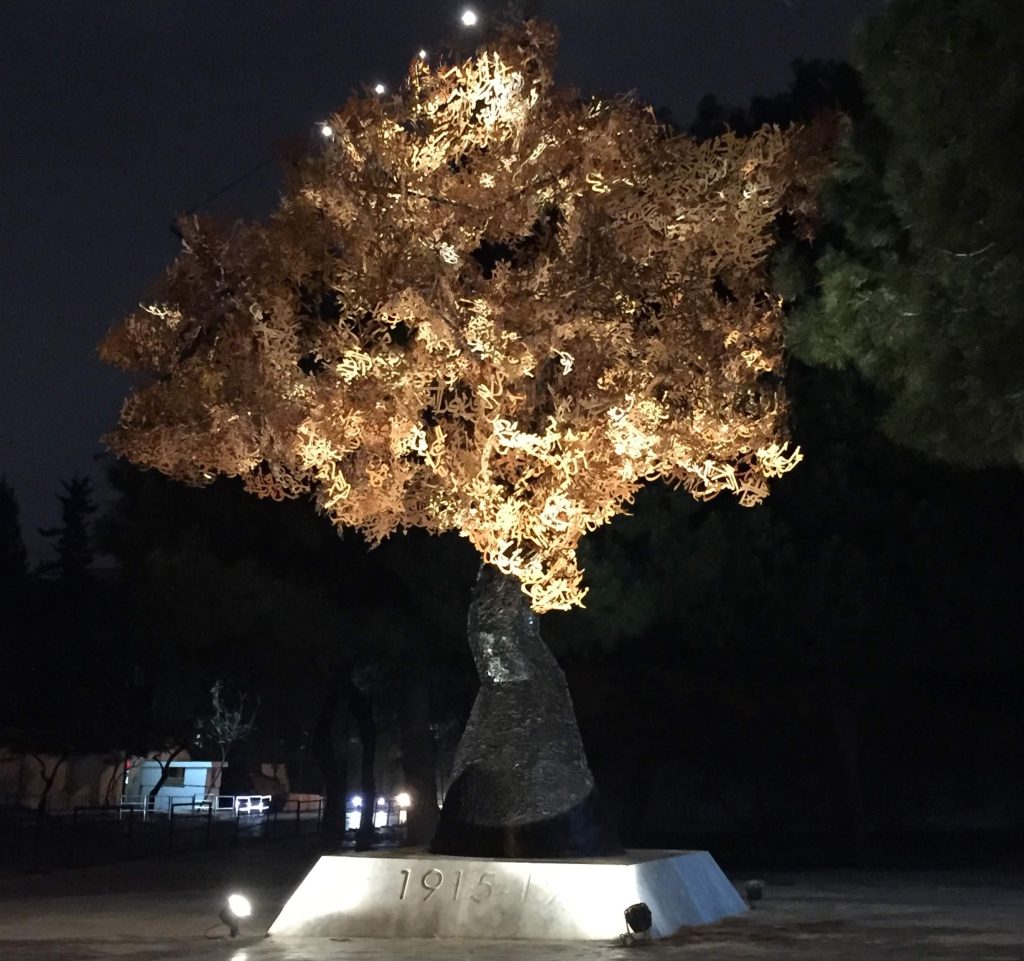
Landscape cross-lighting uplights are fixtures designed to cast light upwards, highlighting desired features. Cross-uplights are typically used to accentuate vertical elements like trees, plants, and architectural features. They can also improve the aesthetic of exterior walls and facades. By casting light upwards, these fixtures draw attention to the height and grandeur of trees and structures. Outdoor cross-lighting uplights create an elegant ambiance, making outside areas feel inviting and magical.
Outdoor Cross-Lighting Vintage Lights
Outdoor cross-lighting vintage lights exude a classic charm and character reminiscent of bygone eras. These fixtures combine modern technology with vintage aesthetics, adding a timeless touch to outside spaces. Vintage lights are perfect for creating a comfy and nostalgic atmosphere in outdoor seating areas, patios, and gardens. They infuse warmth and personality into the space.
Landscape cross-lighting vintage lights add a timeless and inviting feel to outdoor areas, evoking a sense of nostalgia and comfort. These fixtures make a design statement, allowing you to create a unique outdoor environment with vintage elegance.
Outdoor Cross-Lighting Wall Mount
Outdoor cross-lighting wall mount fixtures are designed to be affixed to exterior walls. They provide direct illumination that enhances architectural elements, highlights textures and adds depth to walls. Wall-mounted fixtures are ideal for lighting entryways, patios, and outdoor seating areas. They create a welcoming atmosphere and add visual interest to walls.
Landscape cross-lighting wall mount fixtures emphasize the architectural features of your home or outdoor structures, making them stand out. These fixtures serve both functional and decorative purposes, providing illumination while enhancing the aesthetics of outdoor spaces.
Outdoor Cross-Lighting Well-Lights
Outdoor cross-lighting well-lights are fixtures installed flush with the ground. They emit light upward, accentuating elements like trees, sculptures, and architectural details. Cross-lighting well-lights are excellent for creating dramatic uplighting effects that highlight tall elements, such as trees and columns, adding depth and visual interest to outdoor landscapes.
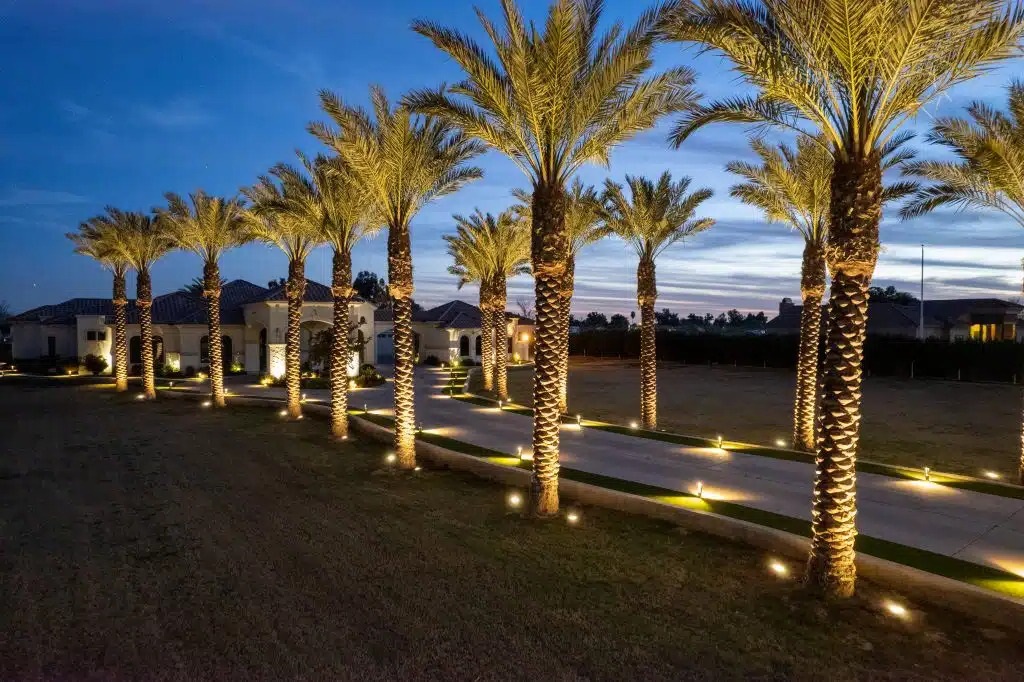
Landscape cross-lighting well-lights create striking uplighting effects that cast intriguing shadows, enhancing the overall ambiance. These fixtures seamlessly blend with the surroundings, making them discreet yet impactful lighting solutions.
Guide to Installing Outdoor Landscape Cross Lighting
Outdoor landscape cross lighting is a method that can improve the look and feel of your outside settings. Installing such a lighting system necessitates meticulous planning, precise execution, and a keen eye for design. In this post, we’ll walk you through the main steps of installing outdoor landscape cross lighting. You’ll get an idea of how to create a thrilling lighted outdoor environment, from designing and gathering materials to installing fixtures, connecting wiring and transformers, testing the system, and fine-tuning the results.
Plan and Design
The first step to a successful outdoor cross lighting installation is proper planning and design. Assess your outdoor space, consider the elements you want to highlight and envision the desired effects. Create a lighting plan that includes fixture placements, lighting angles, and zones.
Walk through your outdoor space during different times of the day to understand how natural light interacts with the landscape. Identify focal points such as trees, sculptures, pathways, and architectural features you want to illuminate. Make a lighting plan that includes the different types of fixtures, their placements, and their respective angles.
Gather Materials
Gathering the necessary materials and tools is crucial for a smooth installation, including lighting fixtures, cables, transformers, mounting hardware, and any additional accessories. Research and choose the cross lighting fixtures that best suit your design goals and landscape elements. Purchase high-quality fixtures, cables, and mounting hardware from reputable suppliers. Acquire a low-voltage transformer that matches the power requirements of your lighting system.
Install Fixtures
Installing the lighting fixtures is a hands-on process that requires careful placement and proper securing. Installation methods may differ depending on the type of fixtures you’ve chosen. Follow the lighting plan you created earlier to position each light according to your design vision. Use appropriate mounting hardware and follow manufacturer guidelines to securely attach the fixtures to the ground, walls, or other surfaces. Make sure the fittings are stable and properly aligned to achieve the desired lighting angles.
Connect Wiring and Transformer
Properly connecting the wiring and transformer is crucial for ensuring the safe and efficient operation of the cross-lighting system. This step involves both electrical work and organization. Lay out the cables according to your lighting plan, ensuring they are hidden from view and safely placed away from foot traffic. Connect the wiring from each fixture to the main cable or hub, following the manufacturer’s instructions. Connect the main cable to the low-voltage transformer, which will step down the power supply to a safe level for outdoor use.
Test the System
After completing installation is critical to test the system to confirm that all fixtures are operational and the lighting effects satisfy your expectations. Turn on the low-voltage transformer and check that all the lights are lit. Adjust the fittings as needed to create the desired lighting angles and effects. Make any necessary repairs to the electrical connections if any of the lights are not working properly.
Fine-Tuning
Fine-tuning involves making the final adjustments to achieve the perfect lighting balance and effects in your outdoor space. Walk around the illuminated area and assess the overall lighting quality, taking note of any areas that are too bright, too dim, or unevenly lighted. Make subtle adjustments to fixture angles, distances, and lighting intensities to create a balanced and visually pleasing lighting scheme. Consider the direction of shadows and the interplay of light to ensure a captivating and well-rounded aesthetic.
Landscape Cross-Lighting Outdoor Best Practices
Landscape cross-lighting is a powerful method that can transform outdoor spaces into captivating visual wonders. Strategically lighting elements from multiple angles you can create depth, drama, and an enchanting atmosphere. However, achieving the perfect cross-lighting effect requires careful planning, avoiding common mistakes, and staying on top of maintenance. In this post we’ll delve into the best practices for outdoor cross-lighting, including design ideas, avoiding pitfalls, and maintenance tips. Following these practices, you’ll be able to create stunning exterior lighting displays that elevate the aesthetics of your surroundings.
Design Ideas for Landscape Cross-Lighting
Landscape cross-lighting design ideas open up a world of possibilities for transforming your outdoor space into a captivating masterpiece. Whether you’re accentuating architectural silhouettes, displaying statement plants, or infusing magic into water features, the interplay of light and shadow will create an ambiance that captivates both residents and visitors. By incorporating these design ideas and experimenting with different lighting techniques, you’ll be able to craft a landscape that is not only visually stunning but also filled with enchanting allure.
Architectural Silhouettes
Enhancing architectural silhouettes through cross-lighting creates a play of light and shadow that highlights the unique features of your structures. This technique adds depth, drama, and a touch of elegance to your outdoor space.
Facade Embrace: Light the front façade of your home with uplights to create a majestic backdrop in the evening hours. This technique adds curb appeal and a welcoming atmosphere.
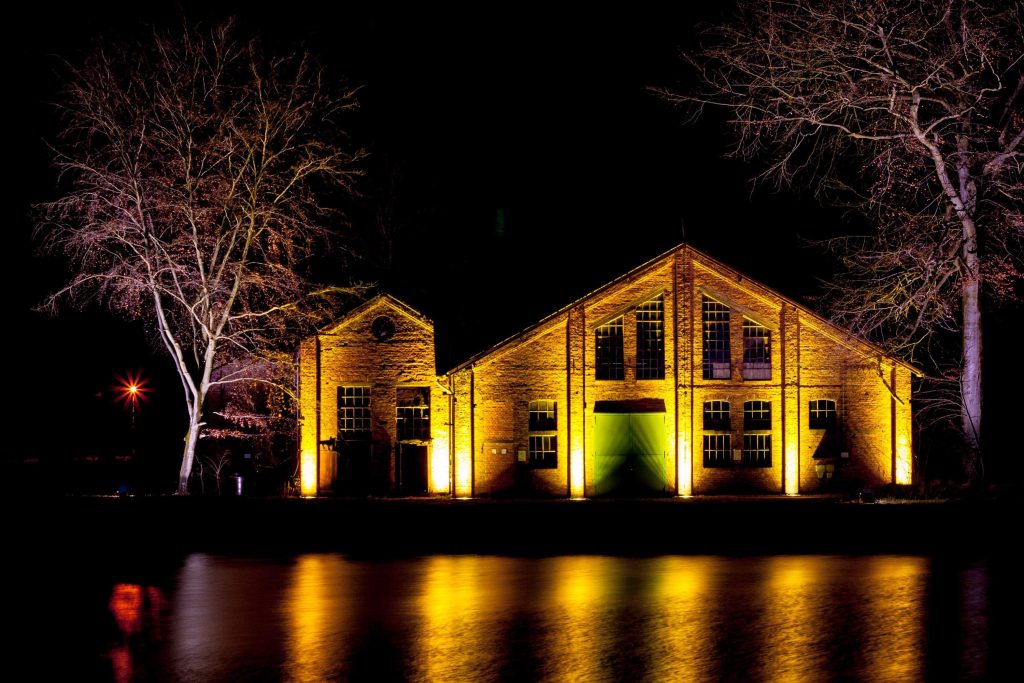
Columns and Pillars: Cast light at various angles on columns or pillars to emphasize their textures and create a sense of grandeur.
Texture Play: Experiment with cross-lighting to emphasize the texture of stone walls, brick facades, or other interesting architectural elements.
Statement Plant Cross-Lighting
Statement plant cross-lighting involves lighting exceptional plants and trees to create stunning visual focal points. This technique showcases the beauty of these plants and adds a sense of enchantment to your landscape.
Majestic Trees: Use uplighting to accentuate the grandeur of large trees, casting their elegant silhouettes against the night sky.
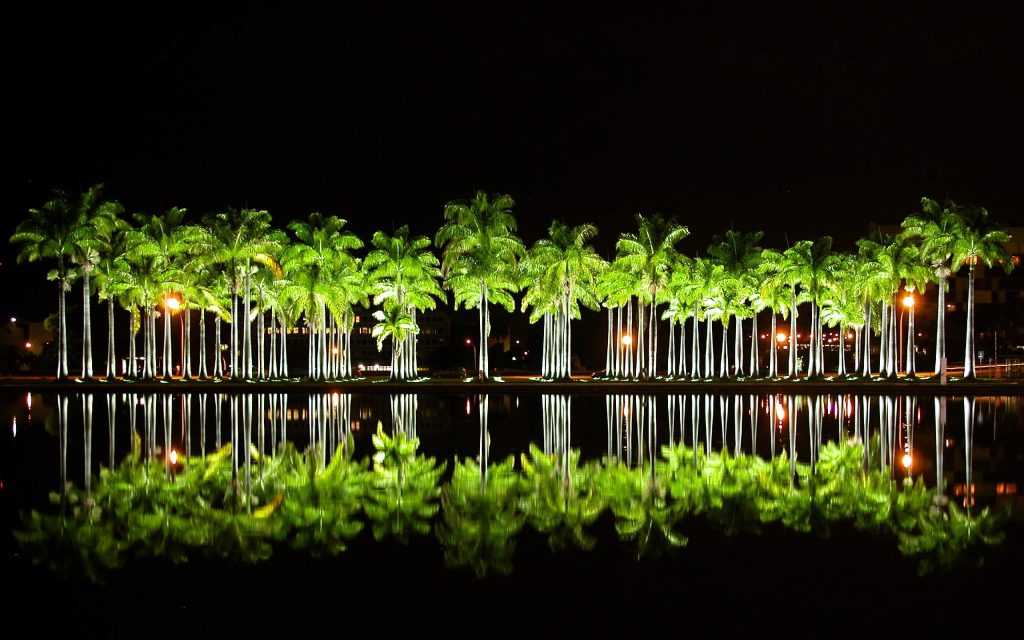
Sculptural Shrubs: Cross-lighting can turn ordinary shrubs into sculptural elements by highlighting their unique shapes and forms.
Floral Accents: Illuminate colorful flower beds or ornamental grasses for a burst of color in the evening.
Water Feature Cross-Lighting
Water feature cross-lighting transforms your ponds, fountains, and waterfalls into mesmerizing focal points. The interplay of light and water creates a captivating and soothing ambiance.
Underwater Magic: Submerge underwater lights to create a magical glow that highlights the movement of water and aquatic life.
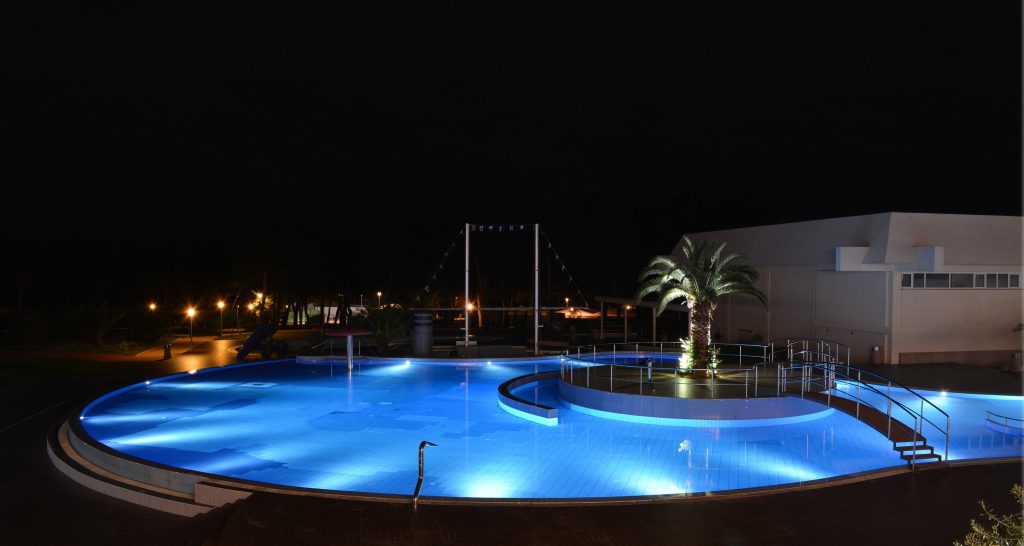
Dancing Fountains: Illuminate fountain sprays with colored lights to create dynamic and visually captivating displays.
Reflective Drama: Use cross-lighting to cast light on the surface of still water, creating beautiful reflections that dance in the moonlight.
Avoiding Common Mistakes in Landscape Cross-Lighting
Avoid common mistakes by balancing your lighting design, addressing dark spots, and considering the long-term effects of your choices.
Stay away from the temptation to over-light your outdoor environment. Too many fixtures can lead to a harsh and glaring environment. Opt for a balanced approach that highlights features without overwhelming the area.
Failure to layer lighting effects can result in a flat and uninspiring display. Incorporate a mix of ambient, task, and accent lighting to create depth and visual interest.
Leaving certain areas in complete darkness can create unevenness in your lighting design. Include enough fixtures to adequately distribute lighting around the space.
Consider how your lighting design interacts with the natural surroundings. Avoid causing light pollution or disturbing wildlife by directing lighting where it’s needed most.
Think about the long-term maintenance of your fixtures. Opt for quality materials and fixtures that can withstand outdoor conditions and require minimal upkeep.
Maintenance and Troubleshooting Tips
Regular Cleaning: Over time, dirt, debris, and insects can accumulate on your lighting fixtures, reducing their efficacy. Clean lenses, bulbs, and casings on a regular basis to ensure optimal illumination.
Check Wiring and Connections: Periodically inspect wire connections to ensure they are secure and free of damage. Flickering lights or full failure can result from loose or corroded connections.
Replace Bulbs Promptly: Burned-out or dim lights can wreak havoc on the overall lighting ambiance. To ensure uniformity and visual appeal, replace bulbs as soon as you identify any problems.
Adjust for Seasonal Changes: Vegetation may grow and block the desired lighting angles as the seasons change. Adjust fixture locations on a regular basis to permit expansion while maintaining the desired lighting effects.
Troubleshoot Effectively: If you have illumination problems, troubleshoot them step by step. To identify and rectify any problems, inspect the wiring, connections, and transformers.
Trends and Innovations in Landscape Cross-Lighting
The world of landscape cross-lighting is undergoing exciting transformations with the integration of LED technology, solar power, motion sensors, and dusk-to-dawn sensors. These trends and innovations are reshaping how we illuminate outdoor spaces, offering energy efficiency, convenience, and enhanced aesthetics. By staying informed about these developments and incorporating them into your lighting design, you can create outdoor environments that are not only visually captivating but also technologically advanced. As technology continues to evolve, so does the potential to create outdoor spaces that are both environmentally conscious and stunningly beautiful.
LED Cross-Lighting
LED cross-lighting has revolutionized outdoor illumination with energy efficiency, durability, and versatility. LED fixtures offer a wide range of color temperatures and can be easily adjusted to create various lighting effects. LED fixtures consume significantly less energy than traditional lighting options, reducing electricity bills and environmental impact, and have a longer lifespan, requiring less frequent replacement and maintenance. LED fixtures come in various shapes and sizes, allowing creative design possibilities.
Outdoor Cross-Lighting Solar-Powered
Outdoor cross-lighting powered by solar energy offers a sustainable and cost-effective way to illuminate your landscape. Solar-powered fixtures store energy during the day and use it to light up your outside space at night. Solar-powered cross-lighting reduces your carbon footprint and reliance on traditional energy sources. Once installed, solar-powered fixtures have minimal operational costs since they rely on free solar energy. Solar fixtures don’t require extensive wiring, making installation hassle-free.
Outdoor Cross-Lighting with Motion Sensor
Outdoor cross-lighting equipped with motion sensors detects movement and activates the lights accordingly. This technology is particularly useful for enhancing security and safety. Motion-sensor lighting deters intruders and provides visibility in areas prone to trespassing. Lights only turn on when motion is detected, conserving energy when illumination is not required. Motion sensors offer hands-free operation, ensuring that lights are on when you need them without manual switches.
Outdoor Cross-Lighting with Dusk to Dawn Sensor
Outdoor cross-lighting with dusk-to-dawn sensors automatically turns on when the sun sets and turns off when the sun rises. This technology ensures that your outdoor space is well-lit throughout the night. Dusk-to-dawn sensors eliminate the need to manually turn on and off lights, resulting in more convenient lighting. Continuous outdoor lighting enhances safety by preventing dark areas that might pose tripping hazards. Dusk-to-dawn sensors maintain a consistent and inviting outdoor ambiance, even during the darkest nights.
Combining multiple innovations can take your landscape cross-lighting to the next level. For example, you can integrate LED fixtures with motion sensors and dusk-to-dawn sensors for a smart and energy-efficient lighting solution.
Real-Life Outdoor Landscape Cross Lighting Designs
Outdoor landscape cross lighting is an artful technique that adds depth, drama, and a touch of enchantment to outdoor spaces. You may build stunning visual displays that transform the ordinary into the spectacular by creatively illuminating diverse components such as sculptures, decks, trees, and water features. In this guide, we’ll explore real-life examples of outdoor landscape cross lighting designs that highlight statues, decks, the front of houses, trees, gardens, and water features. Using these designs as inspiration, you can infuse your outdoor space with a wonderful glow that fascinates inhabitants and visitors.
Outdoor Cross Lighting for Statues
When illuminating statues in your outdoor space, consider using cross lighting to emphasize their intricate details and create captivating shadows. By placing lights at opposing angles, you can bring out the texture and depth of the sculpture.
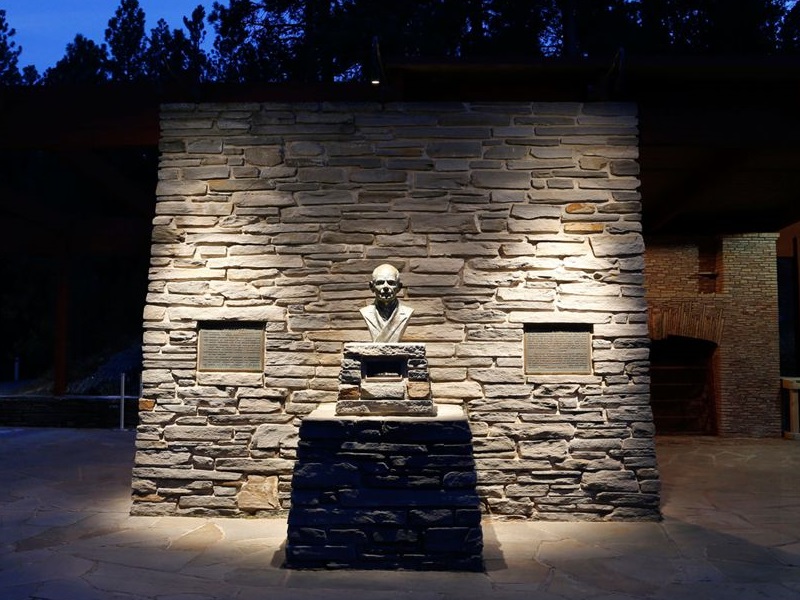
Imagine a garden adorned with a classic marble statue. Place two spotlights at different angles to cast light on the statue’s face and back, creating a stunning interplay of light and shadow.
Outdoor Cross Lighting on Deck for Patio
Enhancing the ambiance of a deck or patio with cross lighting creates a cozy and inviting atmosphere. By strategically placing fixtures, you can illuminate seating areas and pathways while highlighting the deck’s architectural features.
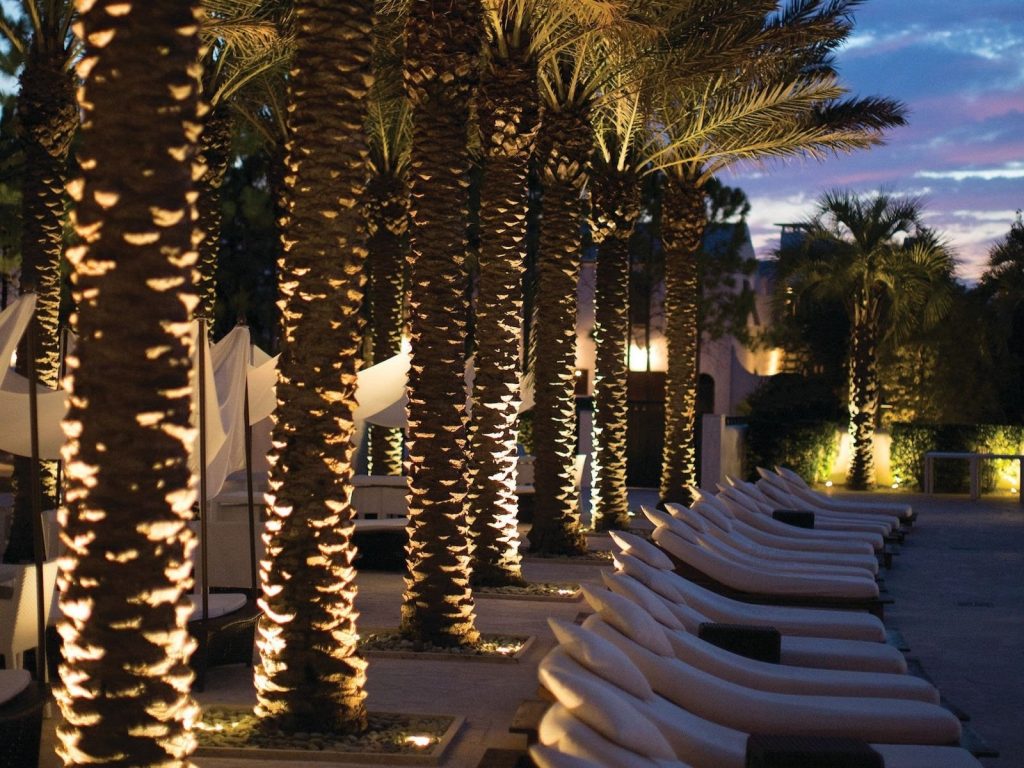
For a deck with built-in seating and a pergola, install cross lighting fixtures along the railings and beneath the pergola. The intersecting beams of light will guide your steps and create a warm and intimate setting.
Outdoor Cross Lighting for Front of House
Outdoor cross lighting for the front of your house adds visual appeal and highlights architectural elements. You may create a welcome and attractive entryway by lighting prominent features such as columns, eaves, or complex masonry.
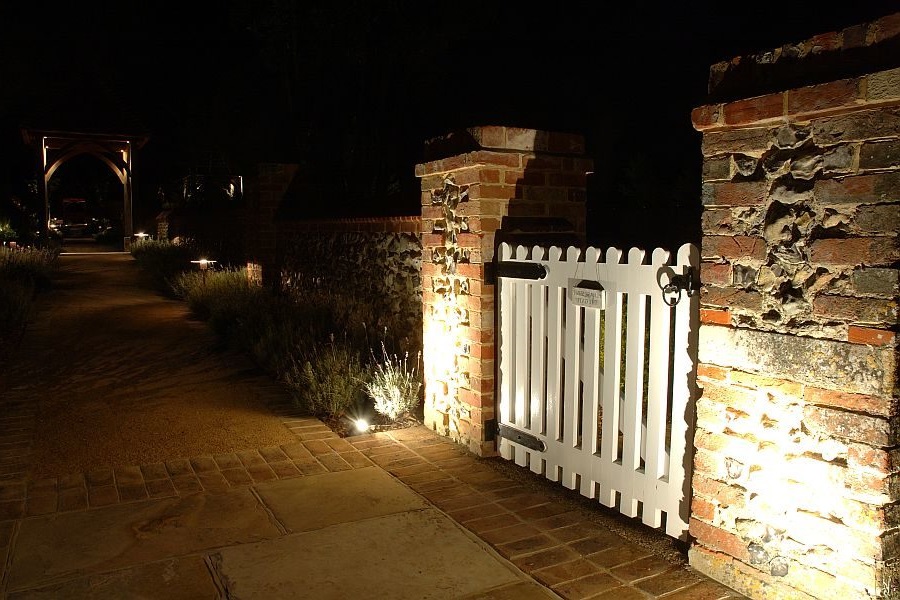
Illuminate the columns on your front porch with uplights placed at opposing angles. This will highlight the height of the columns and create a play of light that draws attention to the entrance.
Outdoor Cross Lighting for Trees
Outdoor cross lighting for trees brings a touch of magic to your landscape. By casting light from different angles, you can emphasize the tree’s unique shape, create captivating shadows, and enhance the overall ambiance.
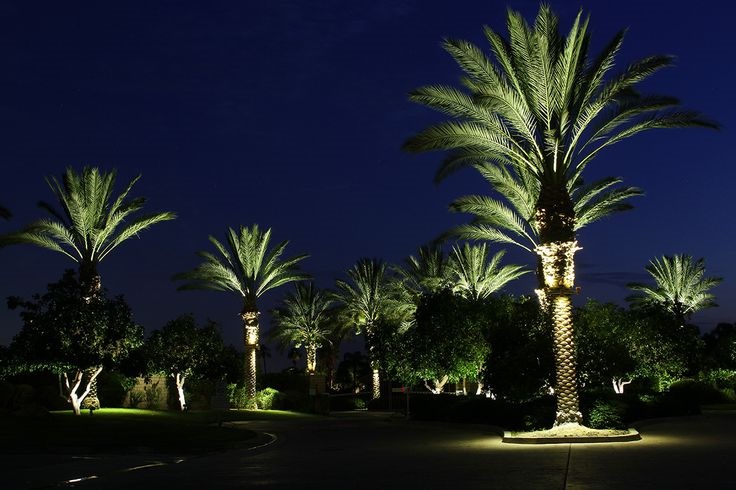
Picture a majestic oak tree in your backyard. Install uplights at the base of the tree, pointing upward, and place additional fixtures at different angles around the tree’s perimeter. The resulting illumination will highlight the tree’s grandeur.
Outdoor Cross Lighting Garden
Outdoor cross lighting can transform your garden into a captivating wonderland by accentuating plants, flowers, and pathways. By using well-placed fixtures, you can create a magical atmosphere that comes alive after sunset.
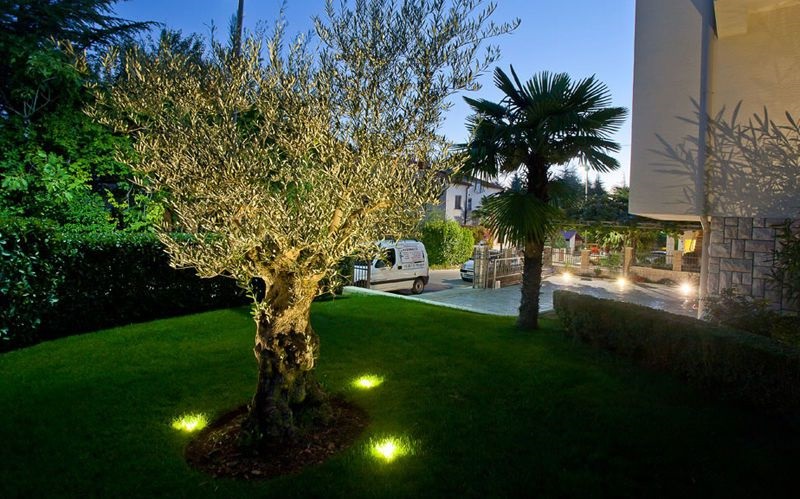
Design a garden pathway lined with flowering shrubs and ornamental grasses. Install well-lights at alternating angles along the walkway to illuminate the foliage and the path, guiding visitors through a delightful journey.
Water Feature Cross Lighting
Water feature cross lighting takes advantage of the interplay between light and water, creating mesmerizing displays. Lighting fountains, ponds, or waterfalls can add a serene and enchanting touch to your outdoor space. Enhance a backyard pond by installing underwater cross lights that cast a gentle glow on the water’s surface. Combine these with uplights around the pond’s perimeter to create reflections and enhance the water’s shimmer.
Combining these real-life outdoor landscape cross lighting designs with your creativity can result in a truly unique outdoor oasis. Whether you’re highlighting statues, decks, the front of your house, trees, gardens, or water features, the interplay of light and shadow will create an ambiance that enchants and captivates. By thoughtfully selecting the right fixtures, angles, and lighting techniques, you’ll be able to create outdoor environments that resonate with beauty, elegance, and a touch of magic.
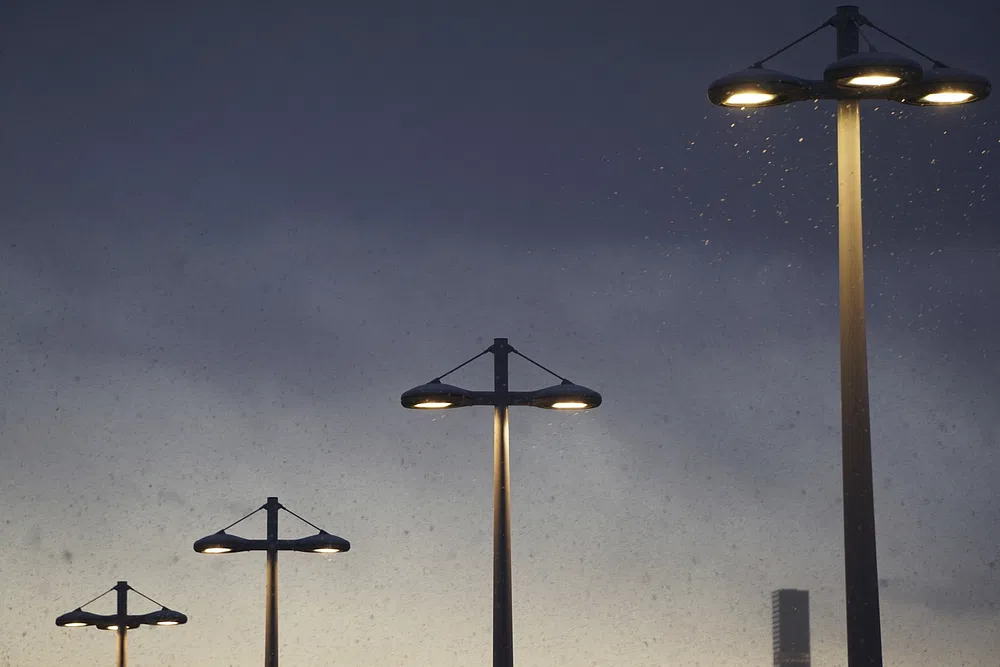
Conclusions
In the realm of outdoor aesthetics, landscape cross lighting emerges as an artistic and technologically advanced approach to lighting outdoor spaces. This lighting method transforms gardens, pathways, architectural features, and even water elements into enchanting realms of light and shadow. By strategically positioning lighting fixtures and playing with angles, outdoor cross lighting not only accentuates the beauty of our surroundings but also evokes emotions, creates ambiance, and enhances safety.
The journey through the intricacies of landscape cross-lighting offers a variety of design options that breathe life into many components of the outdoor environment. It is a meticulously calculated dance between light and darkness that brings sculptures, decks, the front of buildings, trees, gardens, and water features to life after sunset. The enchantment in this approach comes from knowing how light interacts with space, architecture, and nature to create an attractive tapestry that fascinates both the eye and the heart.
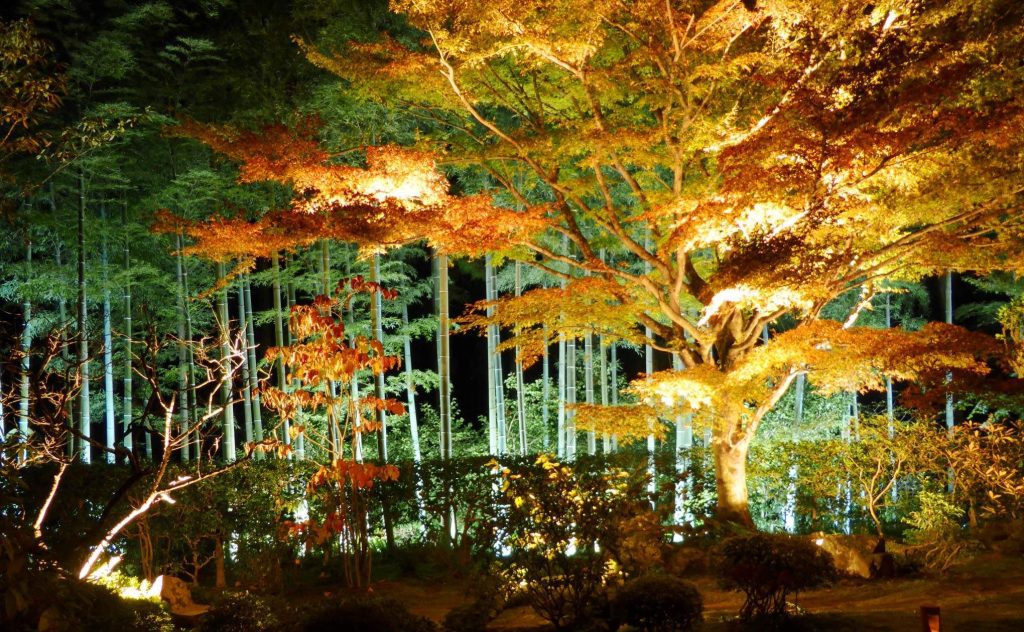
In conclusion, landscape cross lighting is a harmonious blend of art and technology that elevates outdoor spaces to new heights of beauty and functionality. Its ability to highlight the finest details, create breathtaking silhouettes, and evoke emotions makes it a powerful tool for transforming landscapes into enchanting realms. Incorporating innovative trends such as LED lighting, solar-powered solutions, motion sensors, and dusk-to-dawn sensors further enhances the impact of this method, adding efficiency, sustainability, and intelligence to the equation. Outdoor cross-lighting stands as a beacon of creativity, innovation, and the enchantment of light itself as we push the boundaries of exterior illumination.
FAQs (Frequently Asked Questions) about Landscape Cross Lighting
Q1.Can I customize the lighting colors?
Yes, many LED lighting systems offer color-changing options, allowing you to adapt the lighting to different occasions and moods.
Q2.Can I install landscape cross lighting myself?
Absolutely! While sophisticated installations should be left to professionals, many lighting fixtures are designed for do-it-yourself installation.
Q3.Can landscape cross lighting improve home security?
Landscape cross lighting can boost house security by illuminating key areas, inhibiting unwanted entry, increasing visibility for security cameras, and adding a layer of surprise with motion sensor lights. Integrating this technique into your security strategy will help you and your loved ones live in a safer and more secure environment.
Q4.Is landscape cross lighting suitable for small gardens?
Yes, landscape cross lighting may be customized to fit any size location. The increased ambiance can benefit even small gardens and patios.
Q5.Can landscape cross lighting increase the value of my property?
Landscape cross lighting can increase the value of your property by enhancing its aesthetics, functionality, and overall appeal. The captivating and exquisite environment created by this lighting approach can leave a lasting impression on potential buyers, distinguishing your property in a competitive real estate market.
Q6.How do I maintain my landscape cross lighting system?
Clean the fixtures regularly, trim any vegetation that obstructs the lights, and inspect for any loose connections.
Q7.What color of light is best for landscape cross lighting?
The ideal light color for landscape cross lighting depends on your personal preferences and the ambiance you want to create. To establish a balance between comfort and visibility, many homeowners choose a combination of warm white and neutral white lighting. It’s also worth mentioning that the hue of light can interact differently with different surfaces and materials, so it’s a good idea to experiment with several alternatives before settling for a single color temperature.
Q8.Are solar-powered lights effective for landscape cross lighting?
Solar-powered lights can work well for landscape cross lighting, especially in areas with adequate sunlight. However, they might not be as powerful as wired options.
Q9.Should landscape cross lights be taken down in winter?
You can make an informed decision that best meets your outdoor lighting needs by evaluating the endurance of your fixtures, the weather conditions in your region, and your desire for aesthetics and safety. Leaving the lights on could be a possibility if you have high-quality, weather-resistant fixtures and are ready to undertake regular maintenance. If you are concerned about future snow and ice damage, temporary removal may be a good option.
